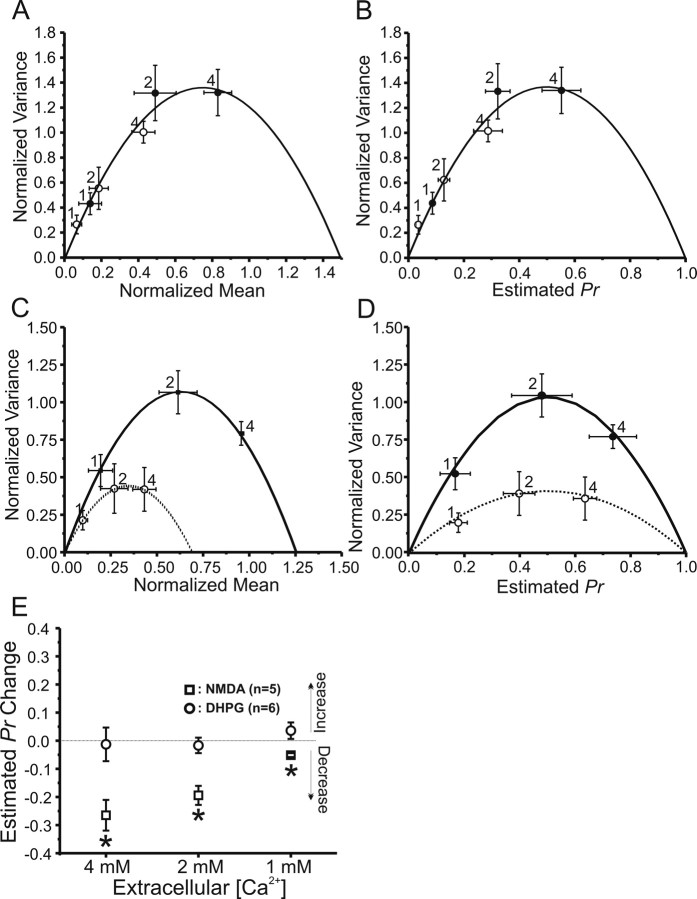Figure 6.
NMDA-induced LTD at Schaffer collateral–CA1 pyramidal cell synapses is associated with a reduction in release probability assessed by VM analysis, whereas (S)-DHPG-induced mGluR-LTD is not. A, VM relationships determined by altering [Ca2+]o to 1, 2, and 4 mm before (filled circles) and 20 min after (open circles) exposure to 10 μm NMDA for 3 min to induce NMDA-dependent LTD (n = 5 cells). Both means and variances are normalized to the maximal peak amplitude recorded at 4 mm [Ca2+]o before NMDA application. Data before and after NMDA application were well fit by a single parabola, consistent with a presynaptic reduction in Pr. B, Calculation of Pr from the data in A confirms the presynaptic NMDA-induced reduction in Pr. C, VM relationships determined as in A before (filled circles) and 20 min after (open circles) exposure to 25 μm (S)-DHPG for 5 min to induce mGluR-LTD (n = 6 different cells). D, Calculation of Pr from the data in C. In both C and D, the data collected before and after exposure to (S)-DHPG fell on two different parabolas, demonstrating that mGluR-LTD is not associated with a change in Pr. E, Estimated change in Pr during NMDA-LTD (open squares) and mGluR-LTD (open circles) at each [Ca2+]o. *P < 0.05, paired t test compared with pre-LTD control values.

